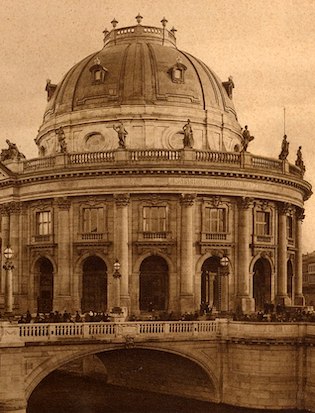Berlin. By Andrew Graham-Dixon.
I am always touched by Berlin’s raggedness, the feel it still has of a place emerging from – or returning to – its own ruins. I can’t think of another city where the old and the new, the half-built and the unbuilt, windblown desolation and perfect kemptness, coexist quite so jarringly. I was last there at the start of this year, on a cold winter’s day in January. Not many other pedestrians were out to brave the minus-something temperatures. On the plus side, this meant that most of the museums I had come to visit were populated by the sparsest of crowds – and what museums they are! You could spend a month in Berlin and still fail to exhaust their riches.
The most famous of them is probably the Pergamon Museum, with its great slabs of frieze from the Pergamon Altar, excavated by Prussian archaeologists digging in Olympia in the 1870s; and its grand reconstruction of the Ishtar Gate and the Processional Way of ancient Babylon, formed from hundreds of thousands of pieces of vividly glazed bricks unearthed during German excavations in Mesopotamia in the early twentieth century – quite possibly the world’s most impressive jigsaw puzzle, conjuring up as it does the danting splendour of the great tyrant Nebuchadnezzar’s city as it was in the sixth century BC. Just around the corner, on the city’s so-called Museum Island (Museumsinsel) is the Altes Museum, an imposing Neoclassical hulk designed by Karl Friedrich Schinkel which houses a collection of antiquities that owes its origins to the Renaissance cabinets of art and curiosities formed by the Electors of Brandenburg. My favourite things here are small but exquisite, microcosmic in comparison with the macrocosmic wonders of the Pergamon: the “Drinking Cup of the Potter Sosias”,...


